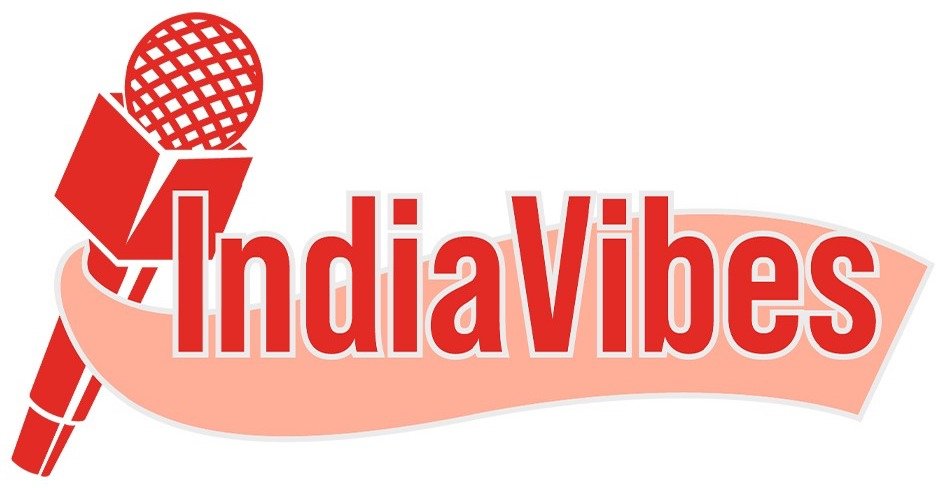Did you know that 24.1GB of mobile data is consumed monthly by the average user here? This staggering statistic fuels a financial evolution reshaping how millions interact with money.
The nation’s digital infrastructure now supports over 75 crore smartphone users, creating unprecedented access to financial services. UPI transactions alone crossed 10 billion monthly payments, proving how technology bridges gaps.
By 2026, experts predict this digital economy will contribute 20% to GDP – double today’s share. Government initiatives like India Stack empower citizens through open networks for credit, savings, and secure data sharing.
We’re witnessing a seismic shift where street vendors and corporate treasurers alike embrace cashless solutions. This isn’t just progress – it’s financial democracy in action.
India’s Digital Economy: A Catalyst for Financial Inclusion

Affordable mobile data and internet penetration are breaking barriers in financial access. At ₹13.32 per GB – among the world’s lowest rates – data fuels 24.1GB monthly consumption, empowering even remote communities.
The Cashless GDP Boost
Every 10% increase in digital transactions correlates with 0.5% GDP growth. Government-built digital infrastructure like India Stack enables this shift, supporting 750 million smartphone users.
By 2026, 100 crore devices will form the backbone for UPI and Account Aggregator adoption. Local manufacturing – we’re now the second-largest producer – keeps hardware costs accessible.
Bridging the Banking Divide
With 47% internet penetration, rural areas gain equal access to services. Over 55% of Jan Dhan accounts belong to women – a testament to mobile-first banking strategies.
These 500 million accounts create pipelines for subsidies, loans, and insurance. What began as financial inclusion now drives entrepreneurial ecosystems nationwide.
How India’s Digital Revolution is Reshaping Personal Finance

A seismic shift in money management is underway, powered by smartphone-toting millennials and forward-thinking policies. We’re witnessing a world where 70% of fintech app downloads come from users aged 18-35 – a demographic rewriting financial rules with every tap.
The Rise of Tech-Savvy Consumers
Young adults are driving change. Mobile-first solutions like UPI see 1,000 crore monthly transactions, with 78% growth post-COVID. The average user now completes 40 digital payments monthly, up from 9 in 2019.
- Account opening times dropped from days to minutes via Aadhaar e-KYC
- Jan Dhan accounts now hold ₹4.2 lakh crore – 55% owned by women
- Micro-investment apps grew 300% among users under 30
Government Policies Accelerating Change
Strategic frameworks built the infrastructure for this transformation. The table below maps key milestones:
| Year | Initiative | Impact |
|---|---|---|
| 2008 | NPCI Founded | Created UPI backbone |
| 2014 | PMJDY Launched | 500M bank accounts opened |
| 2021 | AA Framework | Secure data sharing enabled |
These policies transformed access. Where traditional banking once excluded millions, 82% of adults now use formal financial services. The revolution continues – one tap at a time.
Unified Payments Interface (UPI): The Game-Changer
Three seconds – that’s all it takes to complete a transaction that once required days. This technology miracle powers over 11,800 crore annual payments, making cash obsolete for millions.
From 2012 to 2024: UPI’s Evolution
Nandan Nilekani’s 2012 vision became reality when the Reserve Bank of India launched this innovation in 2016. Today, 300 million active users send money as easily as texting.
The system grew faster than any banking infrastructure in history. Key milestones include:
- 2016: First transaction worth ₹1,000
- 2020: Crossed 1 billion monthly payments
- 2024: Processes ₹20 trillion monthly
20 Trillion Transactions and Counting
Peer-to-peer transfers dominate 65% of transactions, while merchants claim 30%. Cross-border payments now connect with Singapore and UAE markets.
Compare this with legacy systems:
| System | Settlement Time | Cost per Transaction |
|---|---|---|
| NEFT | 2 hours | ₹2-25 |
| RTGS | 30 minutes | ₹25-50 |
| UPI | 3 seconds | ₹0 |
For offline users, UPI Lite processes ₹200-₹4,000 transactions without internet. This serves 700 million people in connectivity gaps.
The digital payment ecosystem expanded further with Bharat BillPay. It handles 45 crore utility bills monthly – from electricity to school fees.
We’re witnessing a banking metamorphosis. What began as payment innovation now unlocks credit through data-backed lending models.
Open Network for Digital Commerce (ONDC): Democratizing Access
Kirana stores are outselling corporate chains—here’s the technology making it possible. The Open Network for Digital Commerce (ONDC) flips the script, giving 500,000+ sellers equal access to buyers. No gatekeepers, no algorithms favoring deep-pocketed players.
Breaking Monopolies in E-Commerce
Traditional platforms charge 15-30% commissions and control visibility. ONDC’s decentralized model removes these barriers. Sellers connect directly to buyers through interoperable solutions—like UPI did for payments.
Compare the ecosystems:
| Feature | Traditional Platforms | ONDC |
|---|---|---|
| Fees | 15-30% | 0% |
| Discoverability | Algorithm-dependent | Merit-based |
| Languages | 2-5 | 22 |
Small Businesses Going Digital
Local shops using ONDC report 40% higher margins. Vernacular interfaces support 22 languages—critical for inclusion. By 2025, 10 million SMBs will transact here.
- Kirana stores: Digital catalogs attract nearby buyers.
- Artisans: Reach national markets without middlemen.
- Farmers: Sell produce at fair prices via transparent transactions.
This isn’t just technology—it’s economic emancipation for millions.
Account Aggregator Framework: Secure Data Sharing
Banks once held all the cards—now borrowers control who sees their financial history. The Account Aggregator (AA) framework flips traditional banking by letting users share verified financial data securely. Think of it as a digital passport for your income, taxes, and investments—stamped by RBI-approved guardians.
Consent-Based Credit Accessibility
Here’s how it works: Your GST filings, bank statements, and mutual funds merge into one secure profile. With 13 million consent requests processed, this technology eliminates paperwork. First-time borrowers now get loans based on cash flow—not collateral.
The system aggregates data from:
- GSTN for business revenue verification
- Banks for transaction histories
- Mutual funds to assess investment patterns
Consider a tailor in Jaipur—her AA profile shows steady payments from 50 clients. This access to verified earnings helps secure a ₹2 lakh working capital loan in 57% less time.
How It Benefits Lenders and Borrowers
For NBFCs, the solutions cut processing costs by 60%. Financial Institutions get real-time risk assessments using 360° profiles. No more guessing games—just transparent lending decisions.
The breakthroughs stack up:
| Stakeholder | Benefit | Impact |
|---|---|---|
| Borrowers | Faster approvals | 57% speed increase |
| Lenders | Lower defaults | 22% risk reduction |
| MSMEs | Credit history | 45% gain in eligibility |
RBI’s security protocols ensure safety. All transfers use AES-256 encryption—the same standard protecting military communications. This innovation isn’t just changing banking—it’s rewriting the rules of financial inclusion.
India Stack: The Backbone of Financial Innovation
The foundation of modern finance isn’t brick-and-mortar—it’s lines of code. We’re witnessing a digital infrastructure so robust that 200 crore identity verifications happen monthly without paperwork. This architecture powers everything from instant loans to subsidy transfers.
- Identity: Aadhaar’s biometric authentication
- Payments: UPI’s instant transaction network
- Data: Secure sharing via Account Aggregators
- Credentials: Digitally signed legal documents
Aadhaar and e-KYC: Identity Simplified
Forget waiting in bank queues—e-KYC now verifies identities in 15 seconds. The system prevented ₹1.7 lakh crore in fraudulent subsidy claims by linking benefits to biometric security. Over 1,400 government and private services use this authentication.
Key features transforming access:
- 57 million daily authentications
- Voice-based verification for rural users
- Encrypted biometric data storage
DigiLocker: Digital Documents on Demand
Your filing cabinet now fits in your pocket. With 4.3 billion stored documents, this solution integrates with universities, banks, and government agencies. eSign’s two-factor authentication makes every signature legally valid.
The system’s API connections enable:
- Instant diploma verification for job seekers
- Paperless loan applications using digital records
- Real-time policy document retrieval
We’re building a future where farmers authenticate crop insurance claims with voice commands. This isn’t just technology—it’s financial empowerment at scale.
Government-Led Digital Infrastructure
Behind every digital payment lies an invisible network built by visionary policies. We’ve moved beyond brick-and-mortar banking to a system where 650,000 Common Service Centers bring services to doorsteps. This digital infrastructure reaches places where traditional finance never could.
The Reserve Bank of India collaborates with ministries to create solutions for all citizens. From UPI123Pay for feature phones to Aadhaar-enabled subsidies, these systems prioritize access. Rural users now complete 320% more transactions than in 2019—proof of this success.
Digital India Initiative: Three Pillars of Success
This transformative program rests on core foundations:
- Infrastructure: 250,000 gram panchayats connected via fiber optics
- Governance: 1,400+ services available online 24/7
- Empowerment: Vernacular apps in 22 languages for true financial inclusion
The JAM (Jan Dhan-Aadhaar-Mobile) trinity revolutionized Direct Benefit Transfers. Subsidies now reach beneficiaries in 28 seconds—with 99.5% accuracy. No more leaks, no more delays.
Pradhan Mantri Jan Dhan Yojana: 500 Million Accounts
What began as financial access became an economic game-changer. The numbers tell the story:
| Metric | Impact |
|---|---|
| Total accounts | 50 crore+ |
| Women account holders | 55% |
| Total deposits | ₹2.1 lakh crore |
These accounts serve as gateways—for loans, insurance, and investment opportunities. The nation watches as street vendors build credit histories and farmers receive instant crop payments. This isn’t just banking. It’s financial democracy in action.
Fintech Innovation and Startups
Traditional banking walls are crumbling as 7,460+ fintech startups rewrite the rules. These companies deliver financial services through smartphones—reaching 15 million users faster than legacy institutions. Their secret? Leveraging technology to solve real pain points.
Neobanks and Micro-Credit Platforms
Apps like Fi and Jupiter serve millennials with zero-balance accounts and smart budgeting tools. Unlike traditional banks, they analyze transactions to offer personalized credit options. Over 92% of their users report better money management habits within three months.
For small businesses, platforms use data from Account Aggregators to approve loans in hours. BharatPe alone disbursed ₹8,000 crore to merchants—often without collateral. This innovation turns sales history into working capital.
AI-Powered Savings Tools
Robo-advisors now manage ₹42,000 crore in assets, acting as financial GPS for beginners. They adjust portfolios using real-time market data and risk profiles. The best part? Fees are 80% lower than human advisors.
Voice-based UPI proves technology bridges gaps—92% of rural users prefer speaking over typing. These solutions show how innovation isn’t just about features, but accessibility.
Credit Accessibility: Breaking Traditional Barriers
A street vendor’s smartphone now holds more lending power than a traditional bank branch. We’re witnessing a revolution where daily transactions become credit histories—and ₹1.2 lakh crore already flows through these new pipelines.
How UPI and AA Empower MSMEs
Every UPI payment leaves a data trail that lenders analyze. Merchant cash flow patterns now approve loans in 22 minutes—57% faster than traditional methods. The Account Aggregator framework fuels this access, sharing verified GST and banking records securely.
Consider BharatX’s model: 800,000 kirana stores receive nano-credit based on their UPI activity. No paperwork. No branch visits. Just financial services flowing where they’re needed most.
Instant Loans via Digital Footprints
OCEN’s technology slashes approval times from 34 days to 3 hours. For small businesses, this means catching growth opportunities without liquidity gaps. The RBI’s PRAVAAH portal accelerates regulatory checks, creating a seamless ecosystem.
Compare the lending landscapes:
| Method | Time | Requirements |
|---|---|---|
| Traditional | 5+ weeks | Collateral, physical documents |
| Digital | 22 minutes | UPI history + AA consent |
This innovation isn’t just about speed—it’s banking reimagined for the mobile era. When a fruit seller qualifies for credit between customer transactions, we know the system works.
These solutions prove that credit should flow like oxygen—invisible, essential, and available to all who need it.
Digital Savings: The New Norm
The piggy bank got a tech upgrade—and 74 million investors noticed. We’re witnessing a shift where systematic investment plans (SIPs) replace traditional chit funds. Daily financial services now happen through apps that teach while they transact.
From Cash Envelopes to SIPs
Mutual fund investments grew 320% since 2016—proof of changing habits. What began as ₹4,500 crore monthly flows now exceeds ₹19,000 crore. The table below shows this evolution:
| Year | Monthly SIP Contributions | Active Accounts |
|---|---|---|
| 2016 | ₹4,500 crore | 12 million |
| 2020 | ₹8,200 crore | 31 million |
| 2024 | ₹19,100 crore | 74 million |
SEBI’s ₹10/month mutual fund plans lowered entry barriers. First-time users now start with coffee-money amounts—a game-changer for students and gig workers.
Micro-Savings Revolution
Apps like Jar prove small amounts add up. Their ₹100/day gold solutions attracted 8 million savers in 18 months. Features driving adoption:
- Auto-roundups on UPI spends
- Visual growth trackers
- Vernacular interfaces in 12 languages
Paytm Money’s AR tools take it further. Point your camera at statements to see 3D portfolio projections—technology making abstract concepts tangible.
Rural areas show 320% higher SIP signups since 2020. Vernacular apps explain market risks using farming analogies. This isn’t just banking—it’s financial education in action.
Challenges in India’s Digital Finance Journey
Behind every leap forward lies hurdles we must acknowledge—our financial transformation is no exception. While technology empowers millions, 700 million citizens remain offline, creating stark divides in access and opportunity.
Bridging the Connectivity Divide
Urban areas show 89% adoption of digital payments, while rural regions struggle at 29%. This gap stems from three core barriers:
- Infrastructure: Only 38% of villages have consistent 4G coverage
- Literacy: 72% of offline users cite interface complexity
- Trust: 54% prefer cash due to security concerns
The table below highlights adoption disparities:
| Metric | Urban | Rural |
|---|---|---|
| Digital payment users | 89% | 29% |
| Average transactions/month | 47 | 9 |
| Fraud awareness | 68% | 31% |
Securing the Digital Frontier
UPI frauds cost ₹1,200 crore in 2023—a 22% annual increase. Common threats include:
- Phishing scams (43% of cases)
- SIM swap frauds (29%)
- QR code tampering (18%)
The RBI now mandates 10-hour reimbursements for verified fraud victims. NPCI’s ₹10 lakh insurance per transaction adds another safety net. These innovations combat risks while maintaining system trust.
Language barriers compound challenges. Only 12% of banking apps support all 22 scheduled languages. This inclusion gap leaves 300 million potential users struggling with English interfaces.
Our path forward requires security upgrades and vernacular technology. When farmers can check balances in Marathi or shopkeepers report fraud in Tamil, we’ll achieve true financial democracy.
Regulatory Sandbox: Balancing Innovation and Risk
Imagine a financial laboratory where groundbreaking ideas get tested before reaching millions—that’s the power of regulatory sandboxes. We’re witnessing 128 live experiments that could redefine banking, all safeguarded by the Reserve Bank of India‘s watchful framework.
RBI’s Four-Phase Testing Ground
The Reserve Bank of India runs sandboxes like controlled ecosystems. Each innovation undergoes rigorous 90-day trials across distinct stages:
- Discovery: Concept validation with risk assessments
- Testing: Live trials with limited users
- Evaluation: Security and impact analysis
- Deployment: Gradual public rollout
Bhashini’s AI translation technology cleared these gates successfully. It now enables cross-border UPI transactions in 12 languages—breaking language barriers in services.
SEBI’s Blockchain Breakthroughs
India’s markets regulator redefined settlement speeds using distributed ledger technology. Their T+0 system completes trades within hours—not days. This solution reduces counterparty risks while increasing liquidity flow.
IRDAI joined the sandbox with parametric insurance products. Farmers now get automated payouts when weather data triggers predefined conditions. No claims process—just instant relief.
| Regulator | Sandbox Focus | Impact |
|---|---|---|
| RBI | UPI Internationalization | Bhashini AI translation |
| SEBI | Blockchain settlements | T+0 trade clearing |
| IRDAI | Smart contracts | Automated crop insurance |
The UAE collaboration takes this further. Our cross-border CBDC project tests rupee-dirham transactions on a shared system. These sandboxes prove that regulation and innovation aren’t opposites—they’re essential partners.
The Road Ahead: What’s Next for Digital Finance?
The next decade will redefine how we interact with money—faster, greener, and more intuitive than ever before. We’re entering an era where augmented reality guides investments and carbon footprints determine credit scores. These advancements will build on existing infrastructure while introducing groundbreaking solutions.
5G and Rural Connectivity
By 2030, 5G networks will cover 90% of the population—including remote villages. This leap enables real-time services previously unimaginable:
- AR financial advisors projecting 3D portfolio visuals onto field walls
- The digital rupee pilot expanding to 5 million users for offline transactions
- Voice-based UPI achieving 98% accuracy in regional dialects
Compare current and future capabilities:
| Feature | 4G Era | 5G Potential |
|---|---|---|
| Transaction Speed | 3 seconds | 0.5 seconds |
| Rural Coverage | 38% villages | 89% villages |
| Data Costs | ₹13.32/GB | ₹4.50/GB |
Green Finance and ESG Integration
The ₹17,000 crore green bond market is just the beginning. New frameworks will evaluate businesses through environmental lenses:
- Account Aggregators incorporating data from energy bills into credit scores
- ONDC enabling carbon credit trading among small merchants
- Solar-powered micro-ATMs serving off-grid communities
UPI 3.0 prototypes already show emotion recognition for secure authentication. A farmer’s stressed voice could trigger loan restructuring offers. This innovation blends technology with human empathy—the ultimate future of inclusive finance.
India’s Blueprint for a Billion-Dollar Digital Future
Vision meets execution as financial ecosystems evolve beyond borders. We’re building on four pillars—inclusion, innovation, infrastructure, and investment—to create a $1 trillion digital economy.
UPI’s success story continues globally, projected to serve 50 nations by 2027. AI-enhanced BharatNet will bring smart banking to 600,000 villages, turning every smartphone into a bank branch.
The account aggregator framework grows at 35% CAGR, transforming raw data into credit opportunities. Citizens aren’t just beneficiaries—they’re stakeholders in this $5 trillion journey.
This is more than progress. It’s a redefinition of how economies grow when technology serves people first.




